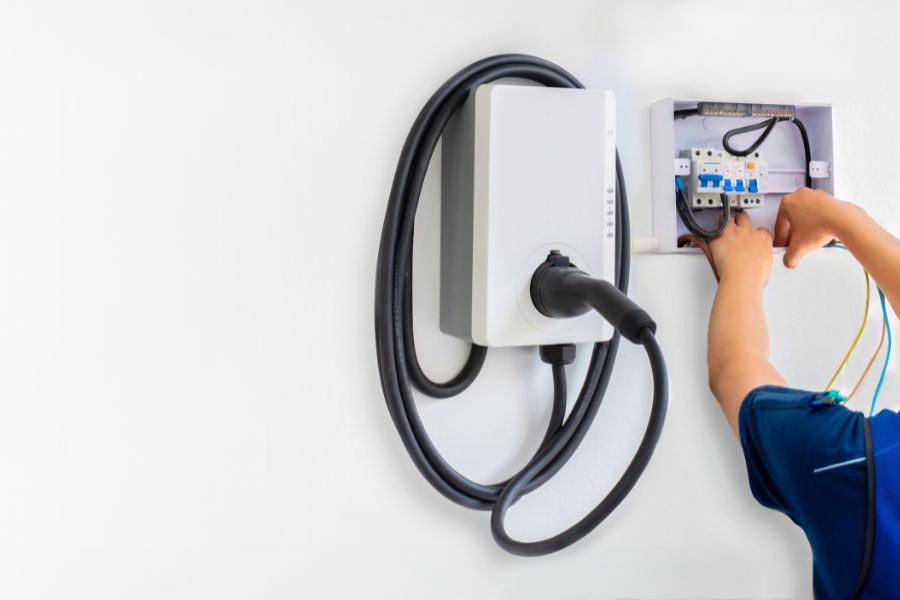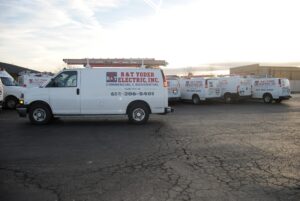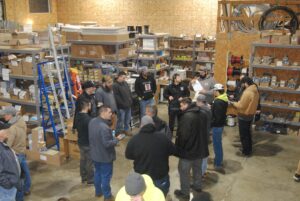
Assess your home’s electrical capacity first. Check panel for slots and amperage, then consider your daily driving needs when choosing a compatible EV charging station. Verify the installation site’s electrical requirements and proximity to the panel. Collect tools and follow instructions for a proper installation, testing the charger before use. Keep your charging station maintained by regularly inspecting cables and connection points, cleaning, and monitoring updates. Each step ensures efficient and safe charging. Plan ahead for a smooth setup and operation of your home EV charging station.
Assessing Your Homes Electrical Capacity
Assessing your home’s electrical capacity involves evaluating the existing wiring, circuits, and electrical panel to determine if it can support the installation of an EV charging station. Begin by checking the electrical panel to see if there are enough available slots for a dedicated circuit for the charging station. The panel should also have the necessary amperage capacity to handle the additional load. Next, inspect the wiring in your home to ensure it is up to code and can safely support the charging station’s power requirements. If your current wiring is outdated or insufficient, it may need to be upgraded to meet the demands of an EV charger.
Additionally, assess the proximity of the electrical panel to where you plan to install the charging station. Ideally, the panel should be close to avoid long and costly wiring runs. This setup not only ensures efficiency but also reduces the risk of power loss or voltage drop. By thoroughly evaluating these aspects of your home’s electrical system, you can determine the feasibility of installing an EV charging station safely and effectively.
Choosing the Right EV Charging Station
When selecting the appropriate EV charging station for your home, consider the specific power requirements and compatibility with your electrical system. The power output of EV charging stations can vary, with Level 1 chargers providing the slowest charge and Level 3 chargers offering rapid charging capabilities. Determine your daily driving needs to choose a station that can adequately charge your EV within your required time frame.
Compatibility with your electrical system is crucial. Ensure your home’s electrical infrastructure can support the charging station you select. Factors such as voltage requirements, circuit capacity, and potential upgrades needed should be assessed. Consult with a qualified electrician to evaluate your electrical system and recommend the most suitable charging station for your home.
Additionally, consider the connector type required for your EV model. Different EV manufacturers use various plug types, so ensure the charging station you choose is compatible with your vehicle. Research available options to find a charging station that meets your power needs, electrical system compatibility, and vehicle requirements.
Preparing the Installation Site
To ensure a successful installation of your EV charging station at home, verify that the selected site meets all necessary electrical requirements and has suitable accessibility for your vehicle. The installation site should have a clear pathway for your vehicle to reach the charging station easily. Make sure there are no obstructions or obstacles in the way. Additionally, ensure that the site is close enough to your home’s electrical panel to minimize the length of wiring needed, which can reduce installation costs and potential energy loss.
Check that the electrical panel has sufficient capacity to support the charging station’s power requirements. You may need to consult with a qualified electrician to assess the panel’s capacity and make any necessary upgrades. Adequate ventilation around the charging station is essential to prevent overheating during operation. Lastly, consider factors like weather protection and lighting for nighttime charging convenience. By preparing the installation site meticulously, you pave the way for a smooth and efficient setup of your home EV charging station.
Installing the EV Charging Station
Begin the installation of your EV charging station by ensuring all necessary tools and equipment are readily available. You will need a voltage tester, wire strippers, a drill, mounting hardware, conduit, electrical tape, and a dedicated circuit breaker. Before starting any work, turn off the power to the electrical panel to ensure safety.
First, mount the charging station on the wall near where you plan to park your electric vehicle. Make sure it is within reach of the electrical panel and that the location complies with any local regulations. Then, run conduit from the panel to the charging station location, ensuring the wires are protected and secure.
Next, connect the wires to the circuit breaker in the electrical panel, following the manufacturer’s instructions. Use the voltage tester to confirm the power is off before making any connections. Finally, attach the wires to the charging station according to the provided wiring diagram, and securely mount the station to the wall. Test the charger to ensure it is functioning properly before regular use.
Maintaining Your Home EV Charging Station
Regular maintenance of your home EV charging station is crucial to ensure optimal performance and safety. Start by regularly inspecting the charging cables for any signs of wear or damage. Check the connection points for any corrosion or loose fittings that could affect charging efficiency. It’s also important to keep the charging station clean and free of debris to prevent any obstructions.
Monitor the charging station’s software and firmware updates to ensure it is running the latest version for improved functionality and security. Periodically test the charging station to verify that it is delivering power correctly and that all safety features are working as intended.
In case of any issues or malfunctions, consult the manufacturer’s guidelines for troubleshooting steps or contact a professional electrician for assistance. By staying proactive with maintenance tasks, you can prolong the lifespan of your home EV charging station and ensure a consistent and reliable charging experience for your electric vehicle.










